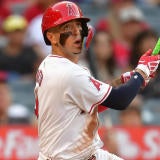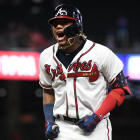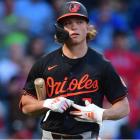
A week ago, the players' message was "just tell us when and where." On Monday, the owners finally took them up on it, with commissioner Rob Manfred exercising his right, as per the agreement when the league first halted operations for COVID-19, to set the length of the schedule.
We had heard 48 games would be the magic number in such a scenario. In actuality, the season will be 60 games, provided the players report by July 1 and agree to the health and safety protocols. All signs point to them doing so. After all, "when and where."
We know the season will begin in late July, perhaps as early as July 24. We know Spring Training 2.0 will be brief, consisting more of workouts than games. We know players will report to their home parks and not play at some neutral hub unless the spread of the virus makes it absolutely necessary. And yet there's so much we still don't know.
So what does it mean for Fantasy Baseball? What all changes because of it? How excited should we be for it? Have we ever seen anything like it?
The answer to that last question is ... no. And because of that ...
Get ready for a wild ride
That's the biggest takeaway. Whether or not an MLB season actually needs to be 162 games, there's a reason it's more than 60. And all of our usual assumptions for a season 2 1/2 times the length of the one we're actually getting have to go out the window.
We can't, for example, rely on the usual closer turnover solving a saves shortage on the fly. We can't lean on the waiver wire supplementing our roster to any extent, really, which might discourage us from taking big swings in the draft, except ...
We need impact, right? There will be some outlier performances in a 60-game season. Maybe someone will hit .400. Maybe someone will finish with twice as many wins or twice as many homers as the next-best someone. The person in your league who benefits from one of those outlier performances will have a leg up, so perhaps it makes sense to target a player with a wide range of possible outcomes, like Joey Gallo.
Then again, predictability itself goes out the window in a 60-game season. If an out-and-out stud like Justin Verlander just so happens to have a disastrous first month, as so many ace pitchers did last year, there's only so much he can do to salvage things at that point. Meanwhile, a total scrub could masquerade as a stud over that length of time. Just look up Martin Perez's numbers through 60 games last year.
We broke down the impacts of the 60-game schedule plus winners & losers of the format and the universal DH during Tuesday's Fantasy Baseball Today Podcast, including if Jesus Luzardo and Julio Urias will be more valuable now. Keep up with us and everything baseball and subscribe here.
Get ready for unconventional pitching strategies
The typical regular season is, of course, 162 games. A lengthy postseason run can be as many as 20 games. A 60-game schedule, like we're working with this year, is in between those two extremes, but it's closer to the typical postseason than the typical regular season.
Have you seen the way teams handle their pitchers in the postseason? It's anything goes, basically. Starting pitchers have short hooks. They'll come back to pitch in relief if need be. Closers typically throw multiple innings, not always in save situations. A team does whatever it needs to do to secure a win that day.
There won't be quite that same urgency to win in a 60-game season, but there will be much more than we're used to seeing. A manager can't just go on autopilot, trusting things to even out over the long haul. He won't need to play for the long haul, building in rest the way he would over a six-month schedule. He could push the limits of his players in a way that's normally reserved for the playoffs ... potentially, anyway.
So would a team dare to use a four-man rotation? Would one lean heavily on openers, treating their starters more like long relievers who throw three innings some days and five innings other days? Would one abandon a strict starting rotation, freeing itself to use its ace late in a tie game. None of these options would become the standard, and yet all would be on the table for a manager with the wherewithal to implement them.
Someone in your league could end up with a dud of a pitcher because of it.
Get ready for a prospect influx
In a full 162-game season, teams don't have to break camp with their best players. They don't have to hit the ground running, banking as many wins as possible in April. They can take it slow with their prospects, trusting themselves to make up for early losses later, and thus make absolutely sure those prospects are ready while preserving service time for future seasons.
Again, a shorter season means more urgency to win, and because rosters will be expanded for the shorter season, it further encourages teams to introduce their top prospects earlier in the season. The specifics of this roster expansion are still a matter of speculation, but we know it could be as many as 30 players at first. Top prospects like Nate Pearson and Dylan Carlson, who were getting the most traction in the Spring Training 1.0, both seem like givens considering. Others like MacKenzie Gore and Nick Madrigal could also be in play.
I singled out one likely call-up for each of the 30 big-league teams a few weeks back. You can read about them here.
Get ready for a universal DH
This one became a topic of debate on Twitter late Monday. The latest proposal from the owners would have guaranteed the use of the DH in both the AL and NL through 2021, so if the players turned it down, does that mean it's out for 2020 as well?
Apparently not, thanks to those health and safety protocols. For at least this short season, the DH is coming to the NL. This will have some negative impact on NL pitchers, of course, but it also adds about 15 usable hitters to the player pool. So which NL bats will benefit most? Chris Towers broke it down a few weeks back.
Get ready for new matchups
To minimize travel and simplify the schedule, teams are expected to play just their own division and the corresponding division in the opposite league. The exact breakdown is to be determined, but plan on teams playing their own division about twice as often as the opposing division.
It means the schedule will be less balanced than ever, which will have some say in the way individual players perform. More time in the AL East means more time in hitter's parks just like more time in the AL West means more time in pitcher's parks. And then there's the AL Central, the only division with two teams in the early stages of a painful rebuild. The NL divisions are more balanced by comparison.
When this type of schedule was first proposed a little over a month ago, I compiled a list of potential risers and fallers. It still applies, more or less, so you can check it out here.
Get ready to tweak your league's schedule
If you play in a Rotisserie league, not much will change for you, really. You can expect some fluky performances from individual players, of course — no format tweak can account for that — but the length of the schedule won't change the way your league determines its champion.
Head-to-Head leagues, whether they use points or categories scoring, will almost certainly have to restructure their playoffs. The season will span only 9 1/2 weeks, which translates to nine if you don't want any scoring periods of less than a week in length. Most likely, you won't want to devote more than two of those to the playoffs, which means only four teams can make it in. We may be able to dream up some creative workarounds between now and then, but that's looking like the most straightforward path.
Is seven weeks enough time, given how fickle Head-to-Head matchups can be, to determine which teams are most deserving? It is if you have every team play multiple matchups every week. Three would make for a win-loss record with 21 "decisions," which would be about the norm for a full-length season. They would be skewed by fluky individual performances, of course, but they wouldn't be skewed by the timing of the matchups themselves — at least not any more than usual for a Head-to-Head league.
Get ready for ... Fantasy Baseball
If it all seems overwhelming right now, keep in mind that the more things change, the more they stay the same. Any amount of baseball is a breath of fresh air, and a shortened Fantasy Baseball schedule, despite all its challenges, is the diversion we need right now.
And those challenges should manifest more in the randomness of the outcomes than in your actual approach. There's a danger in trying to change too much to navigate the unforeseeable. Will this season play out differently from every other? You bet, but where those differences show up is almost impossible to predict so far in advance.
Having your draft as late as possible, after managers have had a chance to comment during Spring Training 2.0, will clear up some of it, but it won't clear up all of it. After all, what a manager says he plans to do and what he actually ends up doing are different, and I doubt most of them will have a feel for their new reality until they're already in it.
So, yeah ... things will be a little wacky, but wacky isn't the enemy of fun. Take it seriously, but don't take it hard, and you can still salvage what once seemed like a lost season.


















